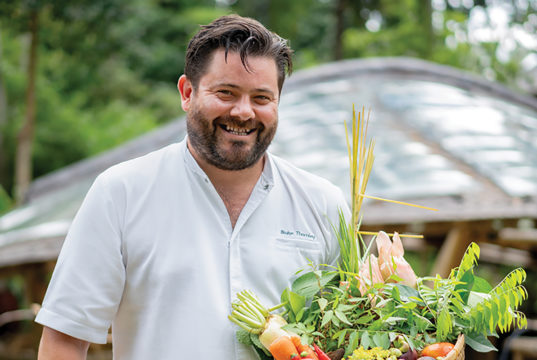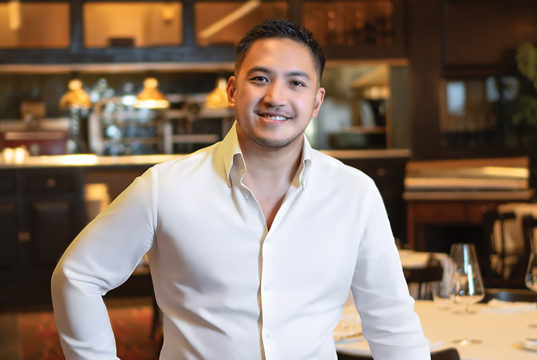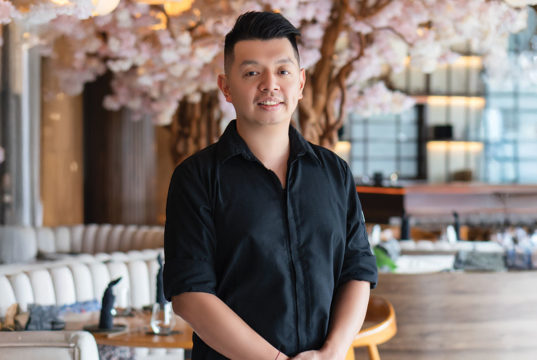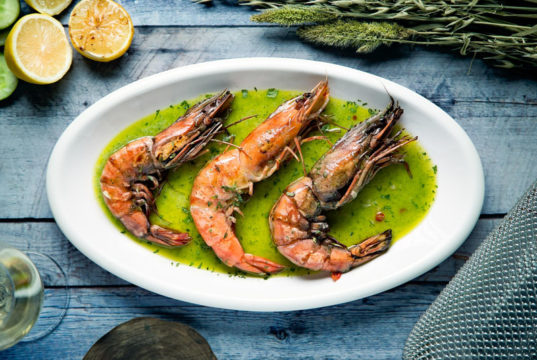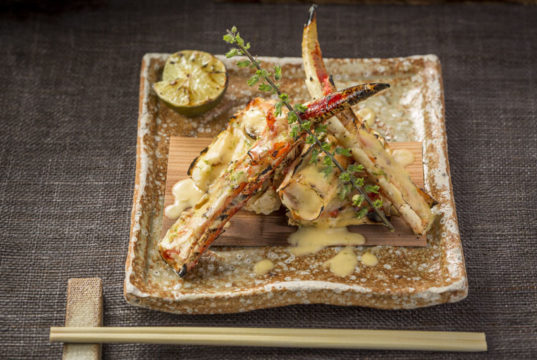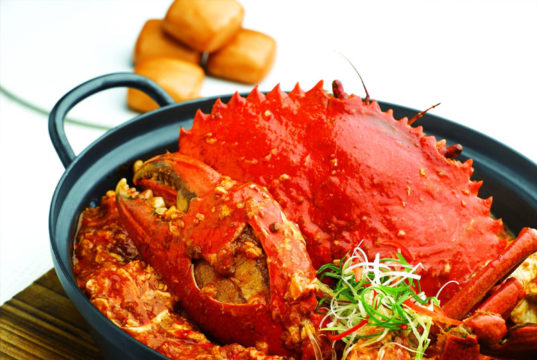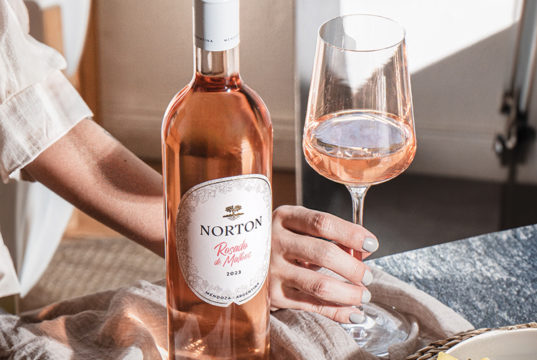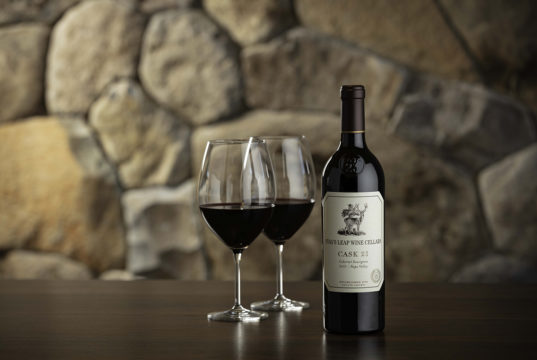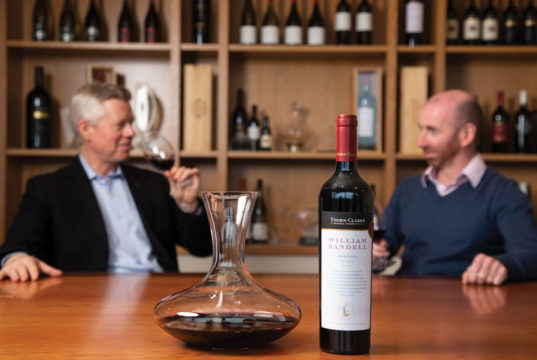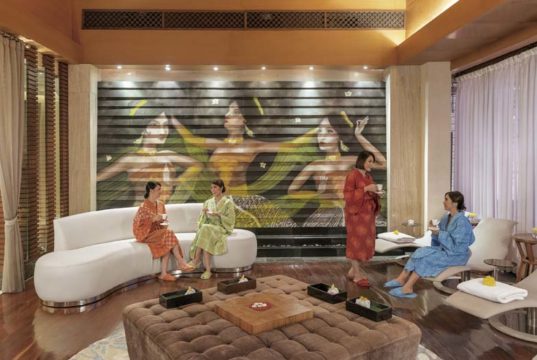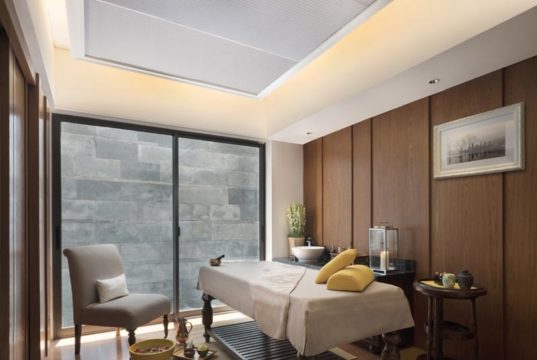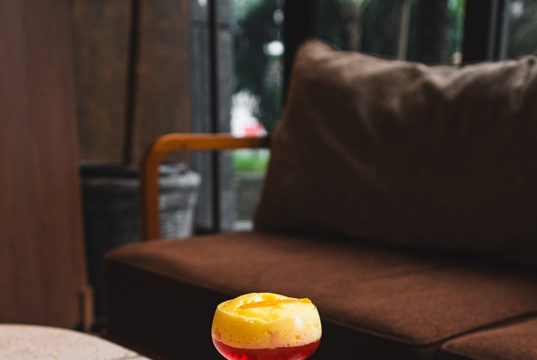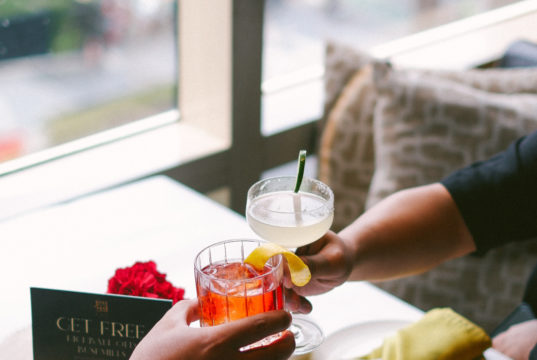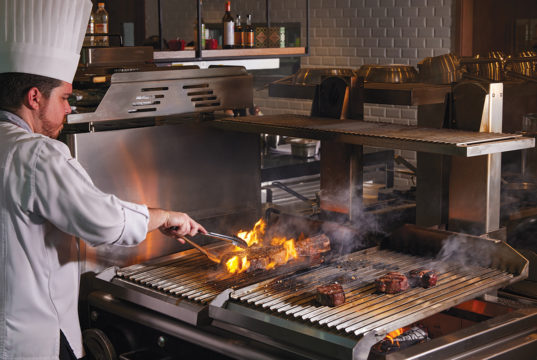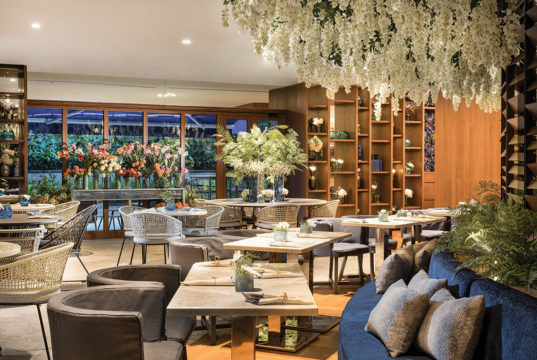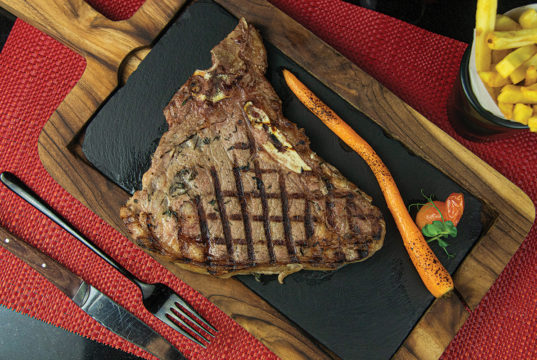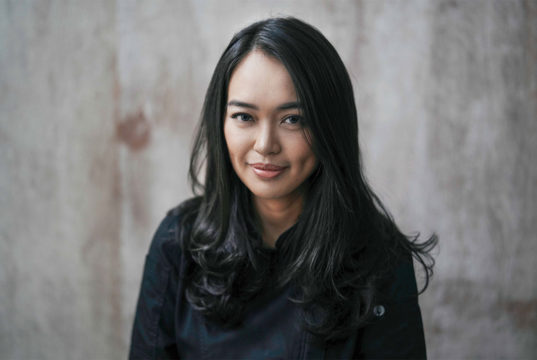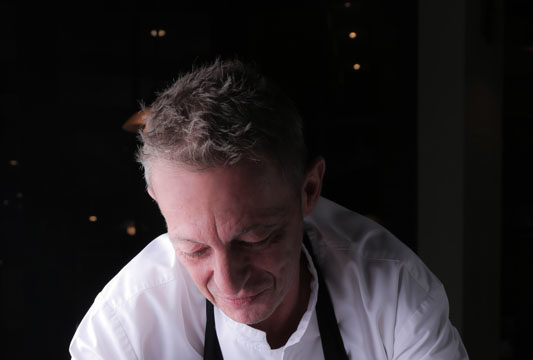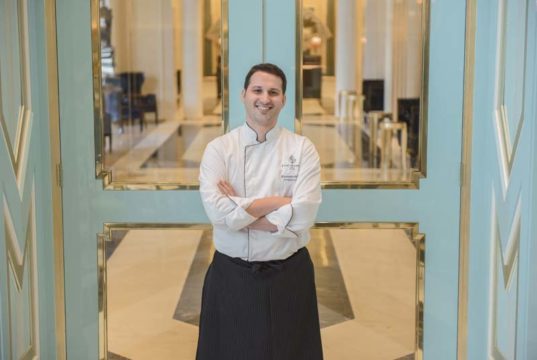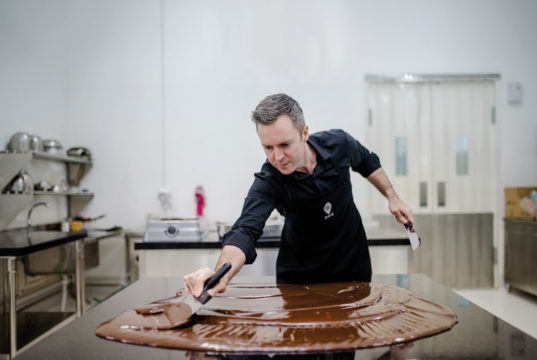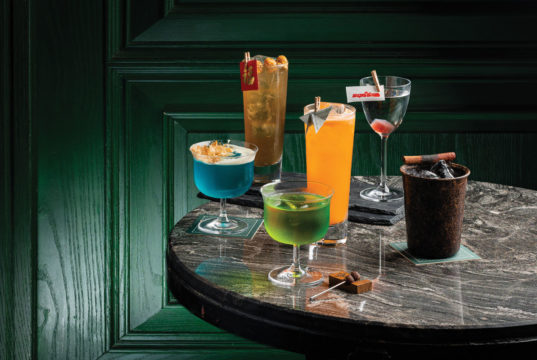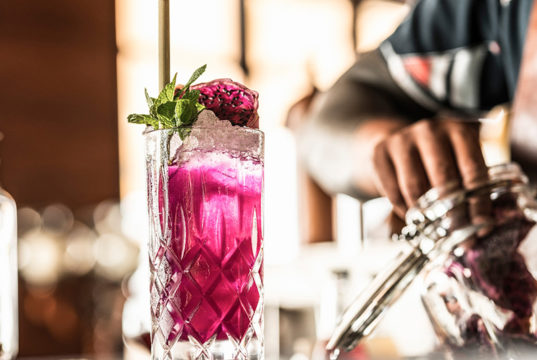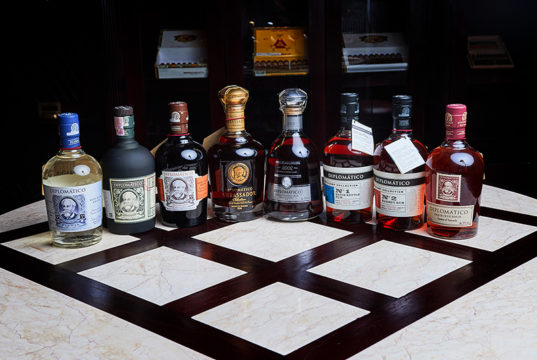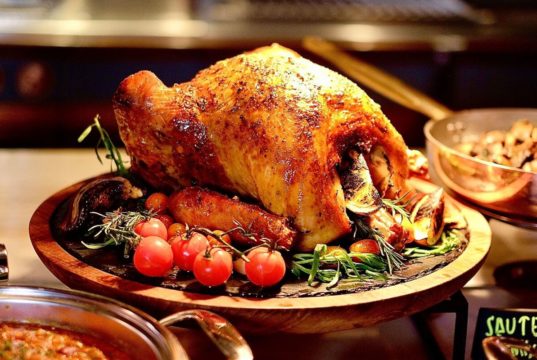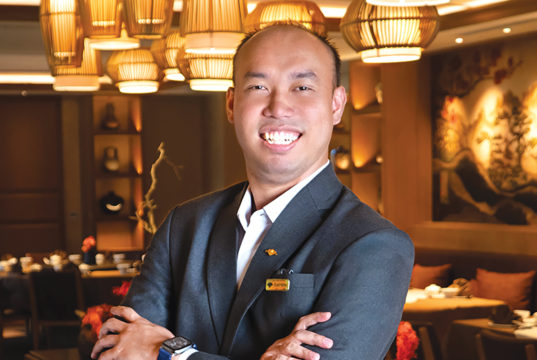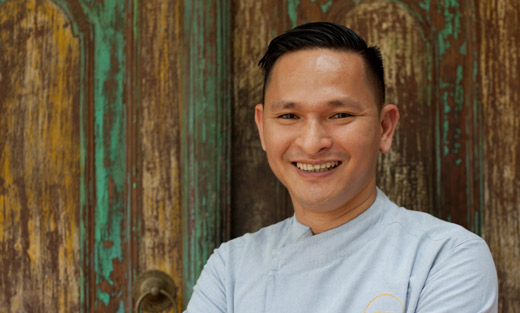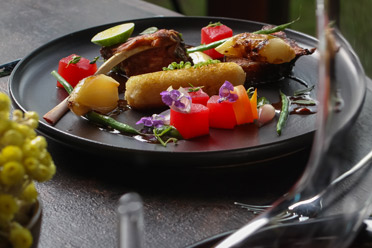For the Love of Indonesia
Devotees of Teatro Gastroteque will be delighted to know that its award-winning Indonesian chef-owner Mandif M. Warokka has a new trick up his chef’s sleeve, soon-to-be unveiled in Bali’s cultural heartland of Ubud.
Indonesia must be very proud of Chef Mandif M. Warokka. Here’s an exuberant, inquisitive and nationalistic chef with a deep-rooted love for his home country. Shying away from the celebrity chef limelight, he puts his head down, his feet firmly on the Indonesian ground, and his heart and soul into perfecting his food at Teatro Gastroteque.
At the Blanco Renaissance Museum in Ubud, the artist revealed his iconoclastic vision for Indonesia’s culinary renaissance, his most provocative ingredient, his dream book project, and his surprising penchant for guitar-making. He is the quintessential advocate for contemporary Indonesian cuisine.
Q: How has Teatro Gastroteque evolved since its opening in 2012? What is the secret to its success?
A: We started with nine tables and now we have fourteen. Our revenue is up 400 percent since 2012. Initially, I was skeptical. We were the first to offer this dining concept (dégustation menu) in Seminyak – an intimate restaurant with no view, no distractions. We focus 100 percent of our energy on the food, the quality of the ingredients, and delivering the best dining experiences. The key to Teatro’s success is in our patience, persistence and passion.
Q: What does it take to win the Michelin stars and what kind of effect can it have on you and your restaurant?
A: I want to be the first Indonesian chef to have a Michelin-starred restaurant. Anyone can make beautiful food, but what is the essence? To win the stars, it’s not all about me; it’s about the concept, the food and the soul of the people behind it. I don’t want my ego to take over and put tremendous pressure on my team. It’s my professional challenge to win the Michelin stars, but I will not live with that kind of pressure for the rest of my life. Cooking is about love. You don’t love it for the sole purpose of getting the Michelin stars.
Q: You are opening a new restaurant in Ubud, how exciting! What is your vision for this?
A: Blanco par Mandif will offer contemporary Indonesian cuisine with 28 seating capacity, opening in November 2014 at the historical Blanco Renaissance Museum in Ubud. The late maestro Antonio Blanco painted nude women at a time when it wasn’t accepted in Indonesia. What he did was contemporary and brave; he took it to another level. This is what Blanco par Mandif is about: Indonesian cuisine, elevated.
Historically, Indonesian cuisine was influenced by the Dutch, Chinese, Indians, Mongols and Malay. Today, it’s blending with European cuisine. I intend to manipulate and improve the textures while preserving the essence of the cuisine and present the intense flavours on a different level. The dégustation menu at Blanco par Mandif will feature a gastronomic voyage into the evolution of Indonesian cuisine – from its colonial beginnings to the modern flavours of contemporary times. Guests will have a unique experience visiting our kitchen, meeting the team and learning about our concept.
Q: You were spotted at this year’s Ubud Writers & Readers Festival. What was that experience like?
A: I prepared Bubur Manado, a North Sulawesi rice porridge dish served socially at breakfast. It’s easy to make and can be vegetarian and 100 percent organic. When you spice it up with homemade sambal ikan roa (spicy condiments made of smoked fish) to elevate the flavours, this creates a beautiful contrast between the land and the sea. The participants were surprised by the mind-blowing flavours coming from such an uncomplicated dish. The secret is in using good quality ingredients. I don’t need gastronomy experts to compliment my food; I prefer amateur gourmands who like to eat street food. To me, good food is “no-brainer” food.
Q: Your most influential chef, Thomas Keller from The French Laundry said, “Food should be fun”. How do you bring fun into your food?
A: The element of fun in my food comes in the colour and the texture. It’s fun when you have something surprising in your mouth. It’s fun when the colours are vibrant. Balance these two components and you’ll have fun in your food. Most importantly, everybody must enjoy themselves when preparing the food. It’s all part of creating good food.
Q: Is there anything you wouldn’t serve in your restaurant?
A: I would say a local ingredient called jengkol (dogfruit or jering). Jengkol has a beautiful texture, but it’s incredibly challenging to work with. It’s very pungent. I’ve been experimenting with how to remove the smell, but if you do that, then it’s not jengkol anymore! I will keep on experimenting.
Q: Where is Bali’s dining scene headed?
A: Bali’s dining scene is very dynamic now, unlike four years ago when all the good restaurants were in five-star hotels. I love that Bali has Merah Putih, Barbacoa, Mozaic and Locavore. I hope in the next five years Bali will be a dining destination. We need more good restaurants in Bali. Let’s not create scarcity; we should create opportunity. We compete in quality and let the customers feel and taste it.
Q: You are an inspiration and a culinary icon to many budding chefs in Indonesia. What advice do you have for them?
A: Have a love for cooking, lots of patience and determination, and be hardworking. It’s a chosen life. I help young chefs to develop the right attitude, not the skills. They must have a good attitude for learning. Anybody can become a chef, you don’t have to go to a culinary school. Culinary schools don’t create chefs. Attitudes do. I’ve had offers to do cooking shows, but I’m not a celebrity chef. I’m a teacher. I really love my chefs and teaching them everything I know.
Q: Would you like to write your own book someday?
A: I’d love to make a book about my contemporary Indonesian cuisine to inspire our youths to be proud of our heritage and cuisine and to choose a chef’s life. It’s a frowned upon profession here, even the word koki (chef in Indonesian language) doesn’t sound nice. I want to create chef hype, develop it further, and learn from one another.
Q: What do you like to do on your day off?
A: I spend time with my two kids. If I miss this moment with my family, it’ll never come back. In the future, I’d like to make guitars. I’m learning from YouTube every day. I already have a concept in mind: French-polishing, hand-painted, superior wood, and only two to four pieces a year. I was in a band when I studied in Bandung, but I don’t like to play guitar, I prefer making them.
Q: What other projects are you working on?
A: I hope to open a restaurant in Jakarta. Dining out is a lifestyle in Jakarta, there’s big money to be made and burnt. Someone once spent Rp 400 million on a bottle of wine! It’s all about social status, good food, nice ambience and a great location. My concept for Jakarta will be “no-brainer” food – delicious noodles, great bakso, tender steaks – all cooked to perfection. I would love to open an Indonesian restaurant in Europe to expose our cuisine to the world. Food is such an important part of life. I love gastronomy. I love this business.
Black Soya Marinated Grilled Lamb Rack
Grilled Rice Cake, JackFruit Curry, Haricot Beans
INGREDIENTS
For the Lamb marination:
800 gm Lamb (1rack), Fat Removed, Bones Cleaned
1/4 cup Sake
1/4 cup Mirin
4 tbs White Miso Paste
3 tbs Sugar
1/4 cup Black Soya/Kecap Manis
Bring the sake and mirin to the boil for 20 seconds to evaporate the alcohol.
Add miso paste and whisk.
Heat up and add the sugar, whisk until dissolved.
Add black soya sauce.
For the Lamb
Clean the lamb and remove all fat, reserving the fat.
Place the trimmed lamb in the marinade and let it rest for 30 minutes.
To serve, torch the lamb with an open flame, season with crushed black pepper.
Transfer to the oven and cook for about 6 minutes (since the loin is intact with the bones, the cooking time is longer than for boneless meat.)
Rest the meat at 60C, for about 4 minutes.
Then cut the lamb across the bones and serve medium rare.
For the JackFruit Curry
400g Jackfruit (dice)
5 cloves Garlic. (paste)
150g Shallot. (paste)
2 pieces Cayenne Pepper
5 pieces large Red Chilli
5g Turmeric Root
5 Kaffir Lime Leaves
2 large pieces Lemon Grass
1/2 tbs ground spice mixed in equal proportions (black pepper, white pepper, cumin, coriander, 1 piece of cardamon)
1 1/2 cups coconut milk
Blend garlic, shallot, chilli and turmeric into a fine paste.
Sauté the mixture, then add the spices. Cook until fragrant.
Add coconut milk, lemon grass and lime leaves.
Cook until the curry is half done, then add the jackfruit.
Check the curry flavour, adjust if necessary.
Cook until the jackfruit is cooked and consistency is right.
Check the seasoning.
SERVE
For The Haricot Vert
200g Hericort Vert
Blanch the haricot vert in boiling water, shock the beans into cold water.
Before serving, sauce the beans with oil and seasoning.
For the Rice Cake
1/2 cup Glutinous Rice
1/2 cup Coconut Milk.
1/2 cup Water
3 cloves Garlic
10 pieces Shallot
2 pieces Kaffir Lime
1 piece Lemongrass
Salt
Wash the glutinous rice thoroughly.
Mix all the ingredients together, bring to the boil and simmer.
Season.
When the liquid has been absorbed by the rice, transfer to steamer pot and cook until the rice is fluffy.
Remove from steamer and, using plastic film, shape the warm rice into a cylindrical shape.
Leave to cool to room temperature.
Cut the rice crosswise to your desired size.
Sear the rice with in a non-stick pan until golden and crispy outside.




